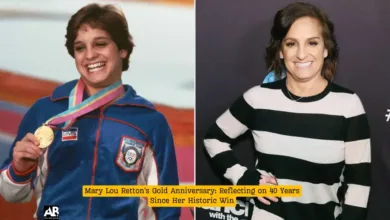Paris Set for Artistic Swimming Debut – But No Men in Sight
Paris is gearing up for an exciting addition to the Olympic program with the debut of artistic swimming. However, as this sport takes center stage, one notable absence has sparked conversation and controversy: the lack of male competitors. This article delves into the significance of artistic swimming's inclusion in the Paris Olympics, the reasons behind the exclusion of men, and the broader implications for gender equality in sports.

Artistic Swimming: A New Olympic Highlight
Artistic swimming, formerly known as synchronized swimming, is set to make its debut at the Paris Olympics. This sport, which combines swimming, dance, and gymnastics, is known for its grace, precision, and artistic flair.
Key Features of Artistic Swimming
**1. Grace and Athleticism
Artistic swimming requires a unique blend of grace and athleticism. Athletes perform intricate routines in the water, synchronized with music, showcasing their strength, flexibility, and coordination.
**2. Team and Solo Performances
The sport features both team and solo performances, allowing athletes to display their skills individually and as part of a cohesive unit. These performances are judged on technical execution, artistic impression, and synchronization.
**3. Cultural Significance
Artistic swimming has a rich cultural history, with roots in various forms of water ballet and performance art. Its inclusion in the Olympics highlights the evolving landscape of athletic competition, embracing diverse and artistic sports.
Impact on the Olympics
The debut of artistic swimming in Paris is expected to attract significant attention and viewership. It adds a new dimension to the Olympic Games, celebrating the artistry and athleticism of the sport and providing a platform for athletes to shine on a global stage.
The Absence of Men in Artistic Swimming
While the inclusion of artistic swimming is a positive development, the exclusion of male competitors has raised questions and concerns. Currently, artistic swimming remains a female-only sport at the Olympic level.
Reasons Behind the Exclusion
**1. Historical Precedents
Historically, artistic swimming has been dominated by female athletes. The sport’s origins and development have been closely associated with women’s artistic and synchronized performances, leading to its current gender-specific structure.
**2. Lack of Male Participation
One reason for the exclusion is the relatively low number of male participants in artistic swimming. Despite growing interest, the sport has not seen widespread male involvement, which has influenced its representation at the Olympic level.
**3. Regulatory Decisions
Regulatory bodies, including the International Olympic Committee (IOC) and the International Swimming Federation (FINA), have maintained the female-only status of artistic swimming. Decisions on including men involve complex considerations of tradition, participation levels, and competitive balance.
Reactions and Advocacy
The absence of men in artistic swimming has sparked diverse reactions. Some argue that maintaining the female-only status preserves the sport’s tradition, while others advocate for greater inclusivity and gender equality.
**1. Calls for Inclusivity
Advocates for gender inclusivity argue that allowing men to compete in artistic swimming would reflect the Olympic values of equality and diversity. They emphasize the importance of providing opportunities for all athletes, regardless of gender.
**2. Challenges and Opportunities
Introducing men into artistic swimming presents both challenges and opportunities. It requires addressing participation levels, creating inclusive training environments, and ensuring fair competition. However, it also offers the potential to expand the sport’s reach and appeal.
Broader Implications for Gender Equality in Sports
The debate over male participation in artistic swimming is part of a larger conversation about gender equality in sports. It highlights the need to examine how sports are structured and governed and to ensure that all athletes have the chance to compete.
Progress and Challenges
**1. Evolving Attitudes
Attitudes towards gender roles in sports are evolving. There is increasing recognition of the need to break down traditional barriers and create inclusive environments that support all athletes.
**2. Policy and Advocacy
Policy changes and advocacy efforts are crucial for promoting gender equality in sports. Organizations and individuals must work together to address disparities and create opportunities for athletes of all genders.
Future Directions
**1. Inclusive Competitions
Future directions for artistic swimming and other sports may involve more inclusive competitions that welcome athletes of all genders. This could involve mixed-gender teams or separate male and female events, depending on participation levels and competitive dynamics.
**2. Continued Advocacy
Continued advocacy for gender equality in sports is essential. Efforts to raise awareness, support male participation in artistic swimming, and address regulatory barriers will contribute to a more inclusive and equitable sporting landscape.





